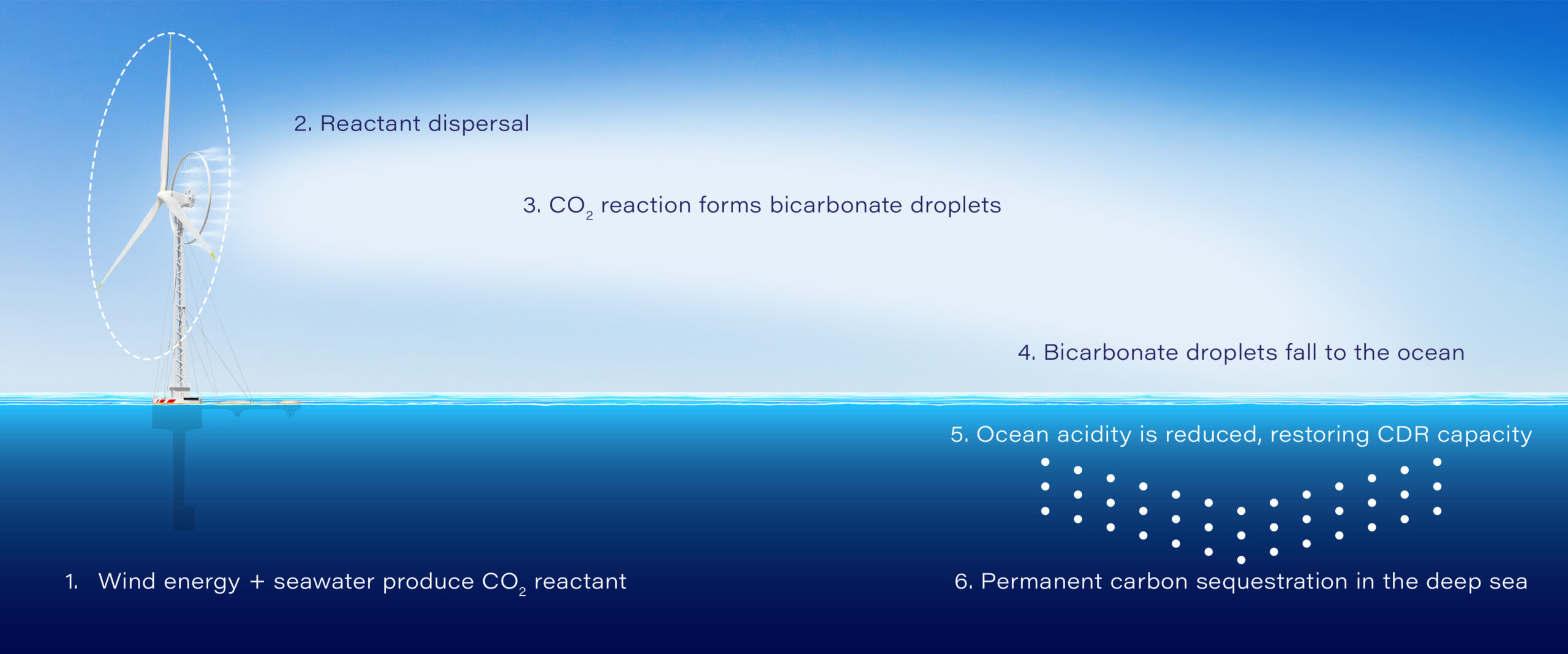Technology




Precipitor adapted wind turbines, while removing airborne carbon, also reduce ocean acidity over long distances. With changing wind speed and direction, mild alkaline droplets can buffer ocean acidity across thousands of hectares, with ocean currents also helping to reduce acidity over long stretches of flows.

Helping Marine Life
Research indicates enhanced ocean alkalinity can help marine life, such as phytoplankton, which provides the basis of the ocean’s food, and plays a major role in the biological carbon pump that locks away carbon over millions of years.

Sequestering carbon in the deep ocean speeds up the powerful geological processes that remove carbon from the atmosphere and enables the ocean to absorb more carbon dioxide while reducing the water’s acidity.
Research indicates enhanced ocean alkalinity can help marine life, such as phytoplankton, which provides the basis of the ocean’s food, and plays a major role in the biological carbon pump that locks away carbon over millions of years.
Sequestering carbon in the deep ocean speeds up the powerful geological processes that remove carbon from the atmosphere and enables the ocean to absorb more carbon dioxide while reducing the water’s acidity.
ACHIEVING
GIGATONS
CDR
Emitter CDR capacity requires increasing diameter, like wind turbines rotors. However, achieving gigatons also requires many deployment sites. This underscores the technology’s advantage where many offshore infrastructures are already suited for integration: wind turbines, marine current turbines, wave power generators, ships, and oil/gas platforms.
In all, a growing universe of over 200,000 potential sites (by 2050). With emitter upscaling, about 20% of the sites could realize a gigaton CDR.
OFFSHORE TURBINES

MERCHANT SHIPS

